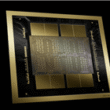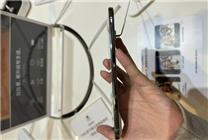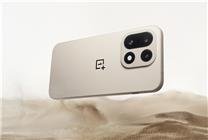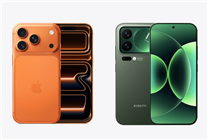Assessing the Market Response to the iPhone Air: Apple’s Latest Offering
Summary:
- The iPhone Air, touted as the thinnest iPhone to date, faces a lukewarm market reception since its October 22 release.
- Despite innovative features, concerns over battery life and the exclusive eSIM support may limit its appeal.
- Market analysts indicate that consumer awareness and acceptance of eSIM technology remain significant hurdles.
On October 22, Apple launched the iPhone Air in China, a device marketed as the "thinnest iPhone in history." This release followed an unexpected delay attributed to delays in securing commercial approval for its eSIM functionality. However, unlike the rapid success of the iPhone 17 series, early reports suggest the iPhone Air’s market performance has not met expectations.
Specifications and Design
The iPhone Air enters the market with a starting price of 7,999 yuan, featuring the A19 Pro chip and a 6.5-inch Super Retina XDR display. Its lightweight design—165g and a mere 5.6mm thick—offers a sleek alternative for users. Notably, this model utilizes a titanium frame, replacing the aluminum used in the iPhone 17 series. However, it exclusively supports eSIM and lacks compatibility with physical SIM cards.
Upon visiting authorized Apple stores in Shanghai, it’s clear the iPhone Air boasts high-quality craftsmanship. However, traffic at retail locations showed a stark contrast to the bustling crowds that surrounded the iPhone 17 launch. One sales representative stated that the limited stock was primarily pre-ordered online, with a significant slowdown in walk-in inquiries.
Market Reception and Consumer Sentiment
Feedback from sales personnel sheds light on consumer perceptions. Many potential buyers regard the iPhone Air as suitable mainly for secondary usage rather than as a primary device. Sales staff emphasized that while the design is appealing, battery life remains a pressing concern. The iPhone Air offers only 27 hours of video playback, lagging behind both the iPhone 17 Pro Max and the standard iPhone 17, which have playback capabilities of 37 hours and 30 hours, respectively.
As demand appears tepid, online stock levels further emphasize this trend. For instance, the 256GB variant of the iPhone Air is readily available for immediate pickup, while larger storage options require extended wait times. Furthermore, in the second-hand market, the iPhone Air is not achieving the premium prices seen with the iPhone 17 series; current listings indicate prices between 300-700 yuan below the original selling price.
Implications for Apple and eSIM Adoption
Apple analyst Ming-Chi Kuo has voiced concerns regarding the iPhone Air’s disappointing demand, hinting at possible reductions in shipping and production capabilities. As reported, the supply chain may see a reduction of over 80% by early 2026, suggesting a challenging landscape ahead for Apple as consumers increasingly gravitate toward established models.
A crucial factor in the iPhone Air’s lukewarm reception may lie in its mandatory eSIM requirement. The transition to eSIM technology has not gained significant traction among consumers, posing a barrier to widespread acceptance. Despite previous advancements in eSIM offerings among Chinese mobile operators, many consumers remain unaware or hesitant to adopt this technology.
Apple’s strategy to forgo a physical SIM option in the iPhone Air effectively compels carriers to support eSIM services or forgo selling the device altogether. However, a recent resurgence in eSIM trials and services by major Chinese telecom providers could be a turning point, enabling broader adoption in the future.
Industry Ripple Effects
The launch of the iPhone Air may have broader implications beyond its immediate sales performance. Its introduction has reignited discussions around eSIM commercialization in China, with key players like OPPO and Huawei preparing to launch eSIM-compatible devices.
As the market evolves, both consumer education and experience will play a pivotal role in shaping the future of eSIM technology within the smartphone landscape. The challenges presented by the iPhone Air’s debut may offer valuable insights for other smartphone brands navigating similar pathways.
In conclusion, while the iPhone Air represents a notable innovation with its design and features, its ability to capture the market hinges on consumer acceptance of new technologies, primarily the eSIM. As competition intensifies, it remains to be seen how Apple and its competitors adapt in this dynamic environment.








